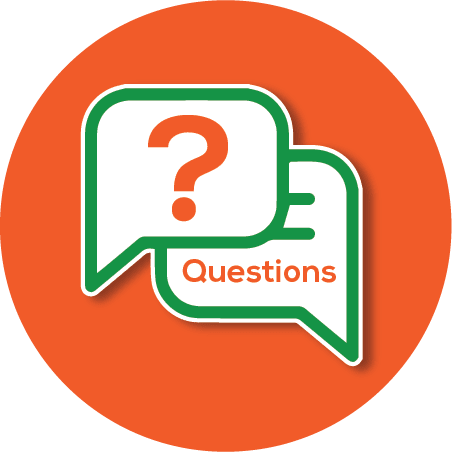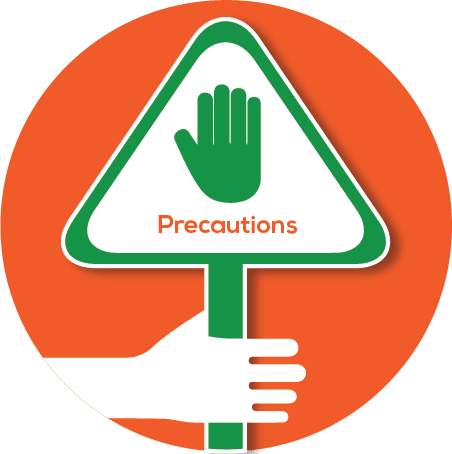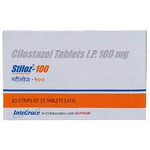zilast (CILOSTAZOL)

What is Zilast?
Zilast tablets are a medication prescribed to help people with intermittent claudication, a condition that causes pain in the legs when walking. It works by preventing a particular protein from working, which helps increase walking distance. Some common side effects of Zilast tablets include headache, diarrhea, upset stomach, rapid heartbeat, dizziness, sore throat, infection, swelling in the hands or feet, runny nose, indigestion, and abdominal pain.

How do I take Zilast?
Take your Zilast tablets exactly as your doctor tells you. Your doctor will tell you how much to take and when. Your doctor may change your dose if needed. Take your tablets 30 minutes before you eat or 2 hours after you eat.

For how long do I take Zilast?
The typical duration of use for Zilast depends on the condition being treated:
- Intermittent Claudication: Patients may start experiencing improvement in symptoms (e.g., increased walking distance) within 2 to 4 weeks. However, a trial period of up to 12 weeks is recommended to assess the full therapeutic effect. If no improvement is seen after 3 months, discontinuation of the medication is advised.
For long-term use, patients should continue taking Zilast as directed by their healthcare provider while monitoring for efficacy and side effects.

What is Zilast used for?
Zilast is a medication that helps people with intermittent claudication walk farther without pain. Intermittent claudication is a condition that causes pain in the legs when walking due to poor blood flow. Zilast works by improving blood flow to the legs, which reduces pain and allows people to walk farther.

How long does it take for Zilast to start working?
You may notice improvement in your symptoms within 2 weeks, but it could take up to 12 weeks to see the full benefit.

Is Zilast effective?
Zilast is a medicine that helps people with intermittent claudication, a condition that causes pain in the legs when walking. In studies, people who took Zilast either 100 mg or 50 mg twice a day walked further and faster than people who took a placebo (sugar pill). The improvement was noticeable within the first few weeks of taking the medicine. In some studies, people who took Zilast 100 mg twice a day increased their walking distance by up to 100% compared to before they started taking the medicine.

How does one know if Zilast is working?
You’ll know Zilast is working if you experience improved walking distance and reduced leg pain associated with intermittent claudication. It may take 2 to 4 weeks to notice initial improvements, with maximum benefits typically seen after 12 weeks of consistent use. Regular follow-ups with your doctor can help assess progress and make adjustments if needed.

How does Zilast work?
Zilast is a medication that works by increasing the level of a chemical called cAMP in the body. cAMP helps to prevent blood clots from forming by stopping platelets from sticking together. It also helps to relax blood vessels, which can improve blood flow. Zilast is used to treat people who have problems with blood circulation, such as claudication (leg pain caused by poor blood flow) and Raynaud's disease (a condition that causes the fingers and toes to turn white and cold).

Who should avoid taking Zilast?
Zilast can cause serious health problems, such as heart issues and allergic reactions. Do not take it if you have heart failure. Call your doctor or go to the emergency room if you experience hives, swelling of your face, mouth, or tongue, trouble breathing, dizziness, or changes in your blood cell counts.

Can I take Zilast with vitamins or supplements?
Zilast can generally be taken with vitamins or supplements, but some may interact with its effectiveness or increase side effects. For example, grapefruit or supplements affecting blood thinning (like vitamin E, ginkgo biloba, or omega-3 fatty acids) could increase the risk of bleeding. Always consult your healthcare provider before adding any new supplements to your regimen.

Can I take Zilast with other prescription drugs?
Zilast may interact with blood thinners, antiplatelets, antibiotics, and drugs affecting CYP3A4 or CYP2C19 enzymes (e.g., omeprazole, diltiazem). Inform your doctor about all medications to ensure safe use.

Can Zilast be taken safely while pregnant?
It is not known if Zilast tablets can harm an unborn baby or if it passes into breast milk. Talk to your doctor about whether to use Zilast tablets or breastfeed. You should not do both.

Can Zilast be taken safely while breastfeeding?
Zilast, a medication used to treat certain blood flow problems, can pass into breast milk and harm a nursing baby. Therefore, you should either stop nursing or stop taking Zilast. Discuss with your doctor to determine the best option for your specific situation.

Is Zilast safe for the elderly?
In general, people of all ages can use this medication safely and effectively. However, some older people may be more sensitive to it, so it's important to monitor them closely. The way the body absorbs, distributes, breaks down, and gets rid of the medication doesn't change with age.

How should I store Zilast?
Keep Zilast tablets in a cool, dry place at room temperature. Make sure it's between 68°F to 77°F (20°C to 25°C). Keep all medicines away from children.

Does Zilast make people tired or drowsy?
Zilast can cause dizziness (10%) and fatigue (<2%). If these occur, patients should avoid activities requiring alertness and consult their doctor for advice on managing these side effects.

Does Zilast cause stomach upset?
Zilast frequently causes gastrointestinal side effects like diarrhea (19%), abnormal stools (15%), and dyspepsia (6%). These occur in more than 1 in 10 patients. If symptoms persist, patients should inform their doctor to consider dose adjustment or alternative treatment

Does Zilast affect sleep?
Insomnia has been reported but occurs in less than 2% of patients. Patients experiencing significant sleep disturbances should consult their healthcare provider for evaluation and possible treatment modifications

Does Zilast make it hard to think or concentrate?
Dizziness (10%) and headaches (34%) may interfere with cognitive functions. Patients experiencing difficulty concentrating should avoid mentally demanding tasks and discuss these effects with their doctor.

Does Zilast affect mood?
While no direct mood effects are noted, dizziness and fatigue could indirectly affect emotional well-being. Patients with mood concerns should seek medical advice.

Does Zilast interfere with sexual function?
Sexual dysfunction is not a commonly reported side effect of Zilast. Patients should discuss any related issues with their doctor for proper evaluation

Does Zilast affect appetite?
Anorexia (loss of appetite) has been reported in less than 2% of cases. Patients experiencing significant appetite changes should notify their doctor.

Does Zilast cause weight gain?
Weight changes are not commonly associated with Zilast. Patients should monitor their weight and consult their doctor if significant changes occur.

Does Zilast cause headaches?
Zilast is a medication that can cause headaches. It's more likely to happen in people taking 100 mg of the medication twice a day. About 3 out of 10 people experience headaches with this dosage. If you get a headache while taking Zilast, talk to your doctor.

Does Zilast limit driving?
Dizziness (10%) and fatigue may impair driving. Patients are advised to avoid driving until they are familiar with how the medicine affects them and consult their doctor if symptoms interfere with their daily activities.

What are Zilast possible harms and risks?
Zilast is a medication used to improve blood flow to the legs and arms. It can cause side effects such as headache, loose stools, and diarrhea. In some cases, side effects can be severe enough to stop taking the medication. Zilast prevents blood cells from sticking together, which helps to improve blood flow.
Available in 2 variations

Zilast 50mg Tablet 10s
Cilostazol (50mg)
strip of 10 tablets

Zilast 100mg Tablet 10s
Cilostazol (100mg)
strip of 10 tablets









.svg)
